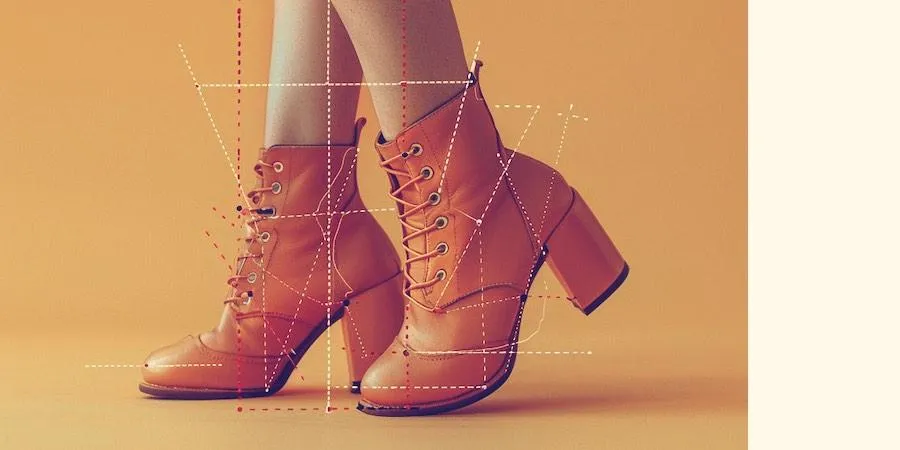Tips
Footwear 'Tips' offers advice on finding comfortable, stylish shoes for people with unique foot shapes, including those with wide feet, high arches, or flat feet, ensuring a perfect fit for all.

Exploring the Diversity of Foot Shapes and Sizes: The Importance of Wide Fit Shoes
The diversity in foot shapes and sizes across the human population is a result of a fascinating interplay of genetic inheritance, personal lifestyle choices, and environmental influences. This piece delves into the myriad reasons contributing to these variations and examines their implications for choosing appropriate footwear, with a special emphasis on the increasing demand for wide fit shoes.
Foot dimensions and contours are as unique as fingerprints, with no two pairs being exactly alike. Genetics play a pivotal role in determining the structural aspects of our feet, including their length, width, and arch height. However, our daily activities and the environments we navigate also significantly shape our feet. For instance, individuals who spend a lot of time standing or walking may develop different foot characteristics compared to those who are less active.
Moreover, the type of footwear we frequently use can influence our foot health and shape over time. Shoes that are too narrow or do not fit properly can lead to discomfort and a host of foot problems. This realization has led to a surge in the popularity of wide fit shoes, designed to provide ample space for the foot, enhancing comfort, and catering to the diverse needs of the population.
The demand for wide fit shoes underscores the importance of selecting footwear that accommodates individual foot shapes and sizes, promoting foot health and comfort. As awareness grows about the critical role that proper shoe fit plays in overall well-being, more people are seeking out footwear options that truly fit their unique foot characteristics.
This exploration into the reasons behind foot shape and size diversity not only highlights the complexity of human biology and lifestyle but also points to the evolving consumer needs in the footwear industry. The shift towards wide fit shoes represents a step in the right direction, ensuring that footwear not only matches personal style preferences but also supports and enhances foot health.

Understanding Foot Diversity
Genetic Variations
Foot shape and size are primarily determined by genetic factors, which explain the vast differences observed across different populations and even within families. The genetic blueprint of an individual can lead to variations such as wide foot proportions, higher arches, or flatter feet, each with specific needs in terms of footwear.
The Role of Genetics in Foot Characteristics
The blueprint of our feet, significantly dictated by our genetic makeup, showcases a wide array of structural differences from one individual to another. These variations go beyond the superficial, impacting more than just the appearance of our feet. They play a pivotal role in our overall foot health and comfort. For example, people blessed with broader feet often find themselves grappling with discomfort or even more serious foot-related health concerns if they end up squeezing their feet into shoes that fail to fit their natural shape properly. On the other hand, individuals who have high arches encounter a different set of challenges. They require shoes that offer extra support to ensure that pressure is evenly distributed across their feet while engaging in activities such as walking or running.
This underscores the importance of understanding that our feet's unique structural characteristics necessitate footwear that caters specifically to their needs. Ignoring these requirements can lead to discomfort at best and, at worst, long-term health issues that could easily have been avoided with the right shoe choice. It's crucial for footwear manufacturers and buyers to recognize and address these functional implications of foot variations, ensuring that everyone has access to shoes that accommodate their specific foot structure, thereby promoting foot health and comfort.
Adaptations and Evolutionary Perspectives
The differences in foot shapes are also thought to be adaptations to varying environments and lifestyles of ancestral populations. For example, populations that historically engaged in activities requiring agility and speed may have evolved narrower feet for more efficient energy use, whereas those in more static or colder environments might have developed broader feet for stability and insulation.
Impact of Lifestyle and Health Conditions
An individual's daily lifestyle choices, alongside their health status, play a pivotal role in determining the health and structure of their feet. Specifically, health issues like diabetes and obesity carry a substantial impact, influencing far more than mere foot size—they can affect the overall well-being of one's feet. Conditions such as these can lead to changes in foot structure and can also exacerbate the risk of complications, underscoring the intertwined relationship between overall health and foot health. For instance, diabetes can cause poor circulation and nerve damage in the feet, making them more susceptible to infections and other serious conditions. Similarly, obesity increases the load on the feet, potentially leading to changes in foot structure and alignment, thus altering the natural shape and health of the feet. This highlights the importance of managing one's health and making informed lifestyle choices to ensure the well-being of their feet, ultimately affecting their quality of life.

Obesity and Foot Size
The worldwide surge in obesity rates is closely linked to an increase in the occurrence of both wider and larger feet among the global population. This phenomenon can be attributed to the fact that as an individual's body weight climbs, their feet are subjected to bearing additional weight. This extra burden often results in significant structural modifications to the feet. Specifically, the increased pressure can lead to the flattening of the foot's arches and a broadening of the feet overall. Such changes underscore the critical need for footwear that is specifically designed to adapt to these new dimensions. Adequately accommodating footwear is not just a matter of comfort; it is also essential in averting potential health issues that can arise from the undue stress placed on improperly supported feet. By recognizing and addressing the need for shoes that cater to these evolving foot shapes and sizes, we can help mitigate the risk of further complications and contribute to overall foot health and well-being.
Diabetes and Foot Health
Diabetes, a condition fraught with various health challenges, can have profound effects on the feet, ranging from nerve damage to alterations in the structure and shape of the feet. These changes underscore the paramount importance of selecting the right footwear for those living with diabetes. Shoes that do not fit well are not just uncomfortable; they pose a serious health risk, potentially leading to the development of ulcers and other severe complications. Such risks are especially heightened for individuals with diabetes, as their condition makes them more susceptible to infections and slower healing processes. Therefore, it becomes crucial for diabetic individuals to prioritize footwear that is specifically designed to accommodate their unique foot needs. Properly fitting shoes can act as a preventative measure, reducing the likelihood of foot injuries and complications that can exacerbate their health condition. This emphasizes the need for awareness and careful consideration when choosing shoes, ensuring they offer adequate support and room, thus safeguarding against the additional risks that diabetes poses to foot health.
Cultural and Demographic Shifts
The diversity in foot shapes and sizes stretches widely, not just on an individual level but also across various ethnic backgrounds, and is further influenced by significant demographic shifts. Such disparities are key in determining footwear choices and needs, which become increasingly apparent as populations undergo the natural process of aging or when they move from one geographical location to another. As we age, our feet can change in size and shape, necessitating footwear that accommodates these changes to ensure comfort and maintain foot health. Migration, on the other hand, introduces a mix of foot profiles into different regions, challenging the footwear industry to expand its offerings to cater to a more diverse clientele. This necessitates a nuanced understanding of how age, migration, and ethnicity affect foot morphology, which in turn, should influence the design and availability of footwear globally. By acknowledging and responding to the varied foot characteristics presented by these factors, the footwear industry can better serve a world that is constantly in flux, ensuring that individuals have access to shoes that fit well, support adequately, and match their lifestyle needs, regardless of their ethnic background or life stage.

Ethnic Variations in Foot Shape
Different ethnic backgrounds are associated with distinct foot morphologies. For example, studies have shown that Caucasian populations tend to have narrower feet compared to African or Asian populations, who often have broader and flatter feet. Recognizing and accommodating these differences is crucial in footwear manufacturing to ensure comfort and prevent injuries.
Aging and Foot Changes
As individuals progress through the journey of life, it's natural for their feet to undergo transformations in both size and shape. This evolution can be attributed to the gradual changes that occur within the ligaments and tendons of the feet. As such, the footwear needs of older adults tend to shift, with a growing need for shoes that offer enhanced support and a more generous fit. This adjustment is vital for ensuring not just comfort but also for maintaining mobility as they age. Shoes that cater to the changing structure of the foot can significantly impact an older adult’s quality of life, helping to prevent falls and other mobility-related issues. Therefore, it’s crucial for footwear designs to evolve in order to meet these changing needs, providing options that accommodate wider feet and increased support without sacrificing style or individual preference. This approach to footwear can make a substantial difference in the daily lives of older adults, allowing them to move confidently and comfortably.
The Role of Wide Fit Shoe

Health and Comfort
Wide fit shoes are not just a matter of comfort but of health. Providing the necessary space for wider feet helps in reducing the risk of foot problems such as blisters, bunions, and hammertoes. Properly fitting shoes are essential for everyone, but especially for those with foot conditions that could lead to further health issues.
Inclusivity in Fashion
The fashion industry has increasingly recognized the need for inclusivity, not only in clothing sizes but also in footwear. Wide fit shoes that are also stylish ensure that individuals do not have to compromise on aesthetics to achieve comfort. This inclusivity helps people feel better represented and catered to by fashion brands.
Technological Advances in Footwear
With advancements in footwear technology, such as 3D scanning and printing, manufacturers can now create shoes that are more tailored to individual needs. These technologies allow for a better understanding of the diverse shapes and sizes of feet, leading to footwear that fits better and enhances comfort.

Challenges and Progress in the Footwear Industry
Market Limitations
Despite the growing awareness and popularity of wide fit shoes, the availability of these options remains limited in many regions and market segments. This restricts consumer choice and can discourage individuals from finding shoes that fit well.
Consumer Awareness
There is a continuing need for education regarding the importance of proper footwear fit. Increased consumer awareness can drive demand, encouraging more manufacturers to offer a broader range of sizes and styles.
Economic Considerations
Expanding a product range to include more sizes and widths can be expensive. Not all companies see sufficient demand to justify the investment, which can slow the pace at which wide fit shoes become more widely available.

The Impact of Obesity on Foot Size and Shape
Statistical Insights
Research indicates a clear trend: as obesity rates increase, so does the average foot size and width. This change requires footwear manufacturers to adapt their products to fit larger and wider feet adequately.
Bio-mechanical Changes
Increased body weight not only changes the size of the foot but also its bio-mechanics. Heavier weight can alter how a person walks and distribute pressure across the foot, increasing the need for shoes that provide adequate support and space.

The vast variety in foot shapes and sizes across the population calls for a multifaceted strategy when it comes to designing and producing footwear. Although strides have been made in acknowledging the unique needs of individuals through the introduction of wide-fit options and the utilization of advanced technology in shoe manufacturing, there is still a considerable journey ahead. As we persist in tackling these challenges head-on, the prospect of a future becomes brighter—a future in which finding shoes that not only fit perfectly but also offer the necessary support for a healthy and dynamic lifestyle is a reality for everyone. This vision requires ongoing innovation and a commitment to inclusivity in the footwear industry, ensuring that no one is left behind due to the limitations of size or shape. By continuing to push the boundaries of what is possible in shoe design and production, we pave the way for a world where the right to comfort, support, and style in footwear is universal, making active and healthy living more accessible for all.
Wide Fit World
Advancing Inclusivity in Footwear
©2024 Wide Fit World All rights reserved.
Wide Fit World is a 1901 French Association
RNA: W922021046
3 rue Voltaire, La Garenne-Colombes, 92250, France
We advocate for inclusive footwear fashion, urging the industry to embrace diverse foot shapes. Through advocacy and collaboration, we strive for a future where comfort and style coexist, ensuring every step counts towards inclusive design innovation
Join our newsletter
*We will get back to you shortly
Google Ads Disclaimer: This disclaimer states there is no guarantee of specific results and each person's results may vary. The information on this site is not intended or implied to be a substitute for professional advice or consultation on the subject. All content, including text, graphics, images, and information, contained on or available through this website is for general information purposes only.
Wide Fit World makes no representation and assumes no responsibility for the accuracy of information contained on or available through this website, and such information is subject to change without notice. You are encouraged to confirm any information obtained from or through this website with other sources.
Wide Fit World does not recommend, endorse, or make any representation about the efficacy, appropriateness, or suitability of any information including sponsors’ information that may be contained on or available through this website.





